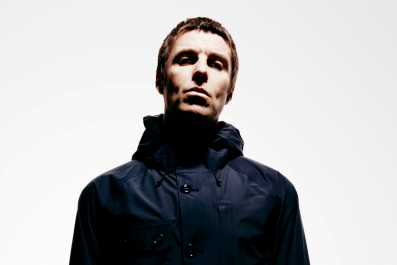It's easy to take weather forecasting for granted. Every goofy TV meteorologist told us more than a week ahead that Hurricane Irma was turning into a giant storm that would nail the United States' East Coast. Given the incomprehensible complexity of weather, such a feat is like predicting today who will win the 2020 presidential election. (Crowdsourced site Paddypower gives Oprah 33-1 odds.)
Over the next few years, technology will make weather modeling even more precise and useful, which is good news as the planet, driven by climate change, enters an era of worse storms. Not only will models get a better bead on storms that can wreck things, but superspecific forecasts will integrate with everyday actions. An app might read your calendar and automatically let you know that there is going to be a rain cloud directly over your patio the moment people arrive for that barbecue a week from Saturday.
Great weather modeling needs four key components: data, computing power, math and scientific understanding. They all feed off one another, and technologies such as artificial intelligence, robotics and the "internet of things" are having a big impact. While no one is expecting an E=MC2–like breakthrough that suddenly reveals weather's secrets, forecasts are steadily going to get more accurate further out. "We're making improvements incrementally, but if you look back over decades, it's really phenomenal," Mary Glackin, head of science and forecasting for IBM's Weather Company, tells me.
Related: Did Hurricane Irma damage Disney World?
Data is forecasting's most elemental component. The data revolution in weather started almost 100 years ago, when Pavel Molchanov in Russia invented the radiosonde—a balloon that carries a few sensors and a radio transmitter into the atmosphere, sending readings back to Earth. In 1960, NASA won the race to put up a weather satellite, TIROS 1. It sent back the first photos of the Earth's cloud cover. Ever since, major countries have been packing the skies with weather satellites, leading up to the GOES-16 satellite launched by the U.S. in late 2016. It transmits a constant stream of detailed images of weather systems. David Novak of the U.S. National Weather Service calls GOES-16 "one of the biggest advancements we've seen."
Satellites give us the macroview, and internet of things devices bring in microdata. These cheap sensors can relay readings from almost anywhere—streetlights, buoys, webcams. The Weather Company has 250,000 tiny weather stations around the world. For perspective, Starbucks may seem inescapable, but it only has about 25,000 stores worldwide. "We work with citizens that have these [stations] in their backyards," Glackin says. "It helps fill in the blanks." Drones and robots will play more of a role too, carrying sensors to places where neither humans nor satellites can venture.
All of this data has to get fed into mathematical equations that represent the way scientists think the weather works. More data helps the models spit out better results, and the results inform the scientists, who can then make better models. But running so much data through supremely complicated models takes fantastic computing power. In 1922, British mathematician Lewis Fry Richardson set mathematical weather modeling in motion by publishing his paper Weather Prediction by Numerical Process. But, he noted, doing the calculations fast enough would take 64,000 people working in a room simultaneously. Computers have made that a little easier. In early 2016, the National Oceanic and Atmospheric Administration turned on two supercomputers that each tripled the speed of its previous capability. These are some of the most powerful computers in the world.
The next step, happening now, involves AI learning from multiple models. TV weather geeks often talk of competing European and American models, but there are lots of models with multilettered abbreviations—CMC, NAVGEM, CFSv2, CanSIPS—all working differently and churning through different data sets. The new wrinkle is that AI can suck up results from all the models and learn from them. Glackin's group at IBM runs through results from more than 160 models multiple times a day. "We adjust forecasts based on how different models are performing at different points on Earth and on different timescales," Glackin says. "So we take the best of the best and do machine learning on that."
The pace of improvement in forecasts is speeding up, which means we'll get more accuracy further ahead of time, and forecasts can get more granular, predicting the weather for a small patch of the planet. That, of course, is tremendously helpful for public safety, but it also aids critical decisions in major industries like aviation, energy, construction and agriculture.
It will also help our everyday decisions. "We're in the middle of this big revolution in how we use weather," says Bill Gail, co-founder of Global Weather Corporation in Boulder, Colorado. "In a decade, those of us who already use weather information will be using it 100 times as often and won't even know it." Today most people make plans for travel or a bike ride or building a still in the backyard, and then look at the weather, or vice versa. But going forward, your still-making app will understand what you want to accomplish and how long it will take, look at your calendar and hyperlocal weather forecasts, and tell you which day would be best to get set up to make a nice full-bodied rye.
Just don't expect weather forecasts to get perfect anytime soon. Like the global economy and politics, weather is too complicated and capricious to ever exactly model. "At some range in the future, it doesn't matter how good your computer models are, the way the atmosphere is chaotic in nature, your predictability will break down," says Greg Carbin, forecast operations branch chief of the National Weather Service.
Tornadoes, for instance, are the modeling equivalent of Donald Trump tweets—no amount of data or supercomputing can help us foresee what will cause them or what damage they will do.

















